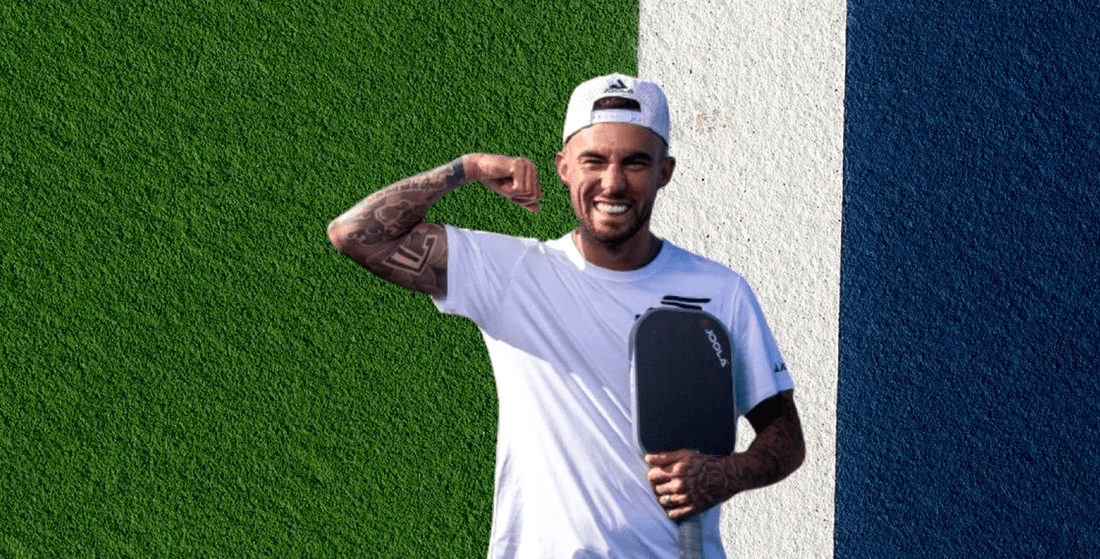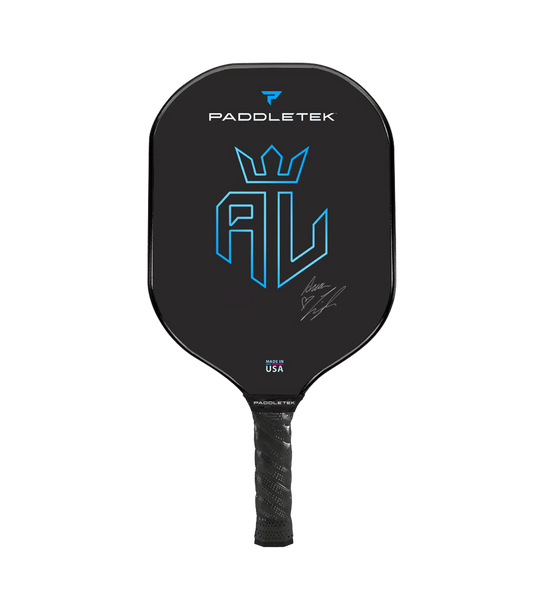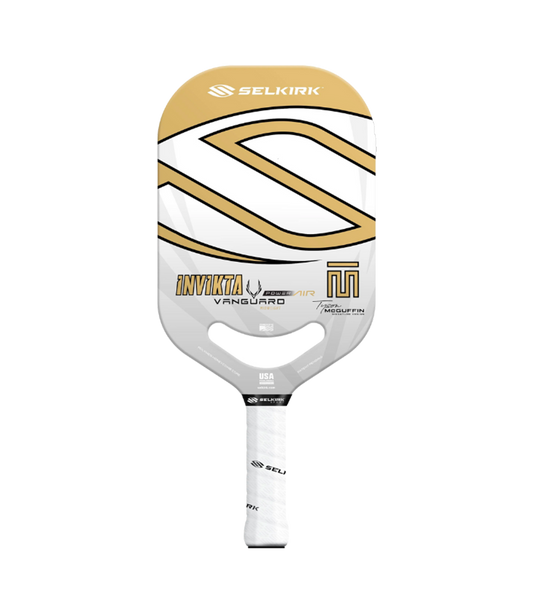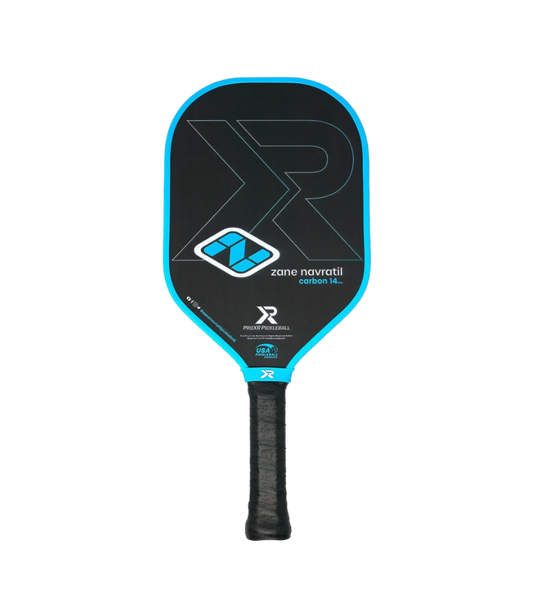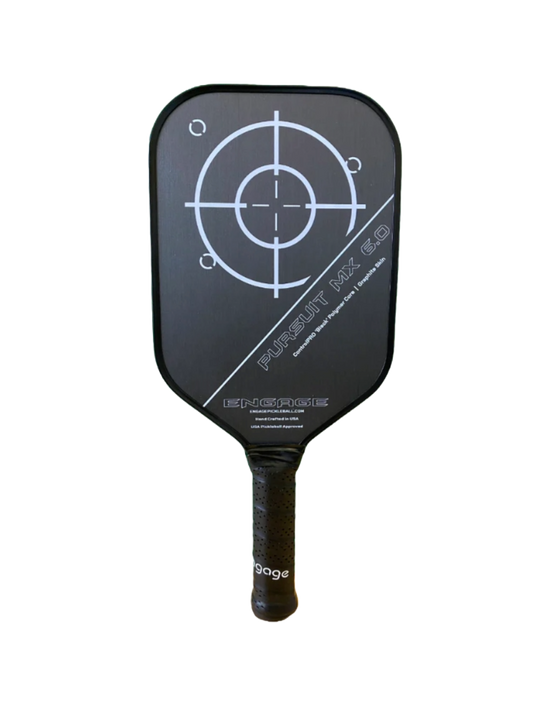The mantra, “it’s all in the player, not the paddle” is true – but it doesn’t answer the simple questions most players have.
Do pickleball paddles really matter? And, should I buy a power paddle or a control paddle?
The answers to both of those questions can be as complex and technical – or simple and straightforward – as you’d like.
But you should have at least a little context if you’re about to go paddle shopping (which you should totally do here, by the way).
What a Power Pickleball Paddle Really Is
"Power paddles are the best choice for players who dominate the court with strength and speed” says Tom Barnes, Director of Research & Development at Selkirk.
“Crafted for those who wield dynamic swings, power paddles are meticulously engineered with advanced materials that amplify aggressive gameplay. Their distinctive elongated shape and heavier weight afford extra leverage and extended reach, packing a forceful punch on each shot."
Let’s break that down a bit.
When it comes to power paddles, it’s all about energy absorption. The paddle face material addresses that concern directly.
Paddle faces made out of fiberglass provide flexibility, creating a springboard-like effect when the pickleball bounces off. But these paddles are sometimes less durable than those made with other materials, such as carbon fiber.
Speaking of…carbon fiber is popular these days because it increases the sweet spot of the paddle overall and provides a “best of both worlds” approach to power versus control (more on that below).
The paddle’s shape also plays an important role. There’s the standard, or wide-body shape, the elongated shape, or something in-between.
This factor changes weight distribution. The more difficult it is to swing a paddle fast, the more powerful it can be, so the elongated shape is typically used to accentuate power in a paddle. Of course, this shape also offers additional reach and leverage.
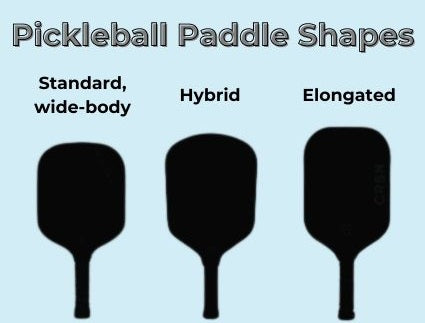
Paddles with thinner cores also provide more power. Look for 13mm or thinner core thickness.
Finally, a good rule of thumb is: if there’s more paddle, there’s more power. Like a carrying a long sword instead of a rapier, one is good for huge attacks, while the other suites fast hands and complete control.
Heavier paddles with weights over 7.5 oz and extended handle lengths of 5 inches and above will provide more reach and allow for powerful shots such as the two-handed backhand.
“Pop,” Thickness, and Dwell Time
Here’s where it gets complicated.
Surely you’ve heard the term “pop” if you’ve ever considered buying a new paddle. It’s slung around like a singular technical term but its impact on performance is a little more complicated.
Thick paddle cores encourage more “dwell time,” or the amount of time the ball stays on the paddle. Like a pillow, the ball can sink in slightly more, meaning the rebound – or pop – is diminished.
But because you have more time with the ball on the paddle, your stroke technically lasts a little longer.
We said above that thinner cores = more power, and that’s technically true.
But if you have incredible pickleball technique, thicker paddles may in fact suit you better, where thinner paddles give you a bit of immediate help in the power department no matter the quality of your form.
In summary:
- Thinner paddles = firm backboard, more upfront “pop”
- Thicker paddles = flexible backboard, more power generated by staying on paddle longer
Who Should Buy a “Power Paddle”
Austin Kim, product manager of hardline products at JOOLA, says most recreational players should probably not worry too much about adding tons of power to their game via a power-focused paddle.
“A control-focused paddle should be the direction you go in most of the time. Obviously, we try to blend both power and control into most of our paddles, but a power-focused paddle is geared for those with incredibly soft hands; those who are dialed in to most shots and the mechanics of the game.”
Think of automobiles: most people should probably drive Camrys and Civics for their everyday driving needs. But manufacturers also design Ferraris for enthusiasts or those with specific speed needs.
That said, it never hurts to experiment with different paddle styles as you never know what is going to surprise you.
If you like resets and dinking, you’re generally geared for a control-focused paddle, but if you lack power in a major way, perhaps a power paddle could make up for your weak spot.
If you play singles often, elongated paddle shapes with thin cores will help you cover more of the court.
Power Paddles vs. Control Paddles
The reality is that most paddles are a little bit “power,” a little bit “control,” with the balance swaying depending on the model and all of the traits listed in the first section of this article.
For more on control paddles and some excellent examples, click here.
Again, most paddles still have a great deal of control-focused elements blended into their design. It does truly all come down to the player and their techniques.
Some of the Best Power Pickleball Paddles Money Can Buy
Below, we've included a few of our store's most popular power-focused paddles.
But even though it isn't in our store (yet!), you should know about JOOLA's new Gen 3 series. Find our review here for everything you need to know.

